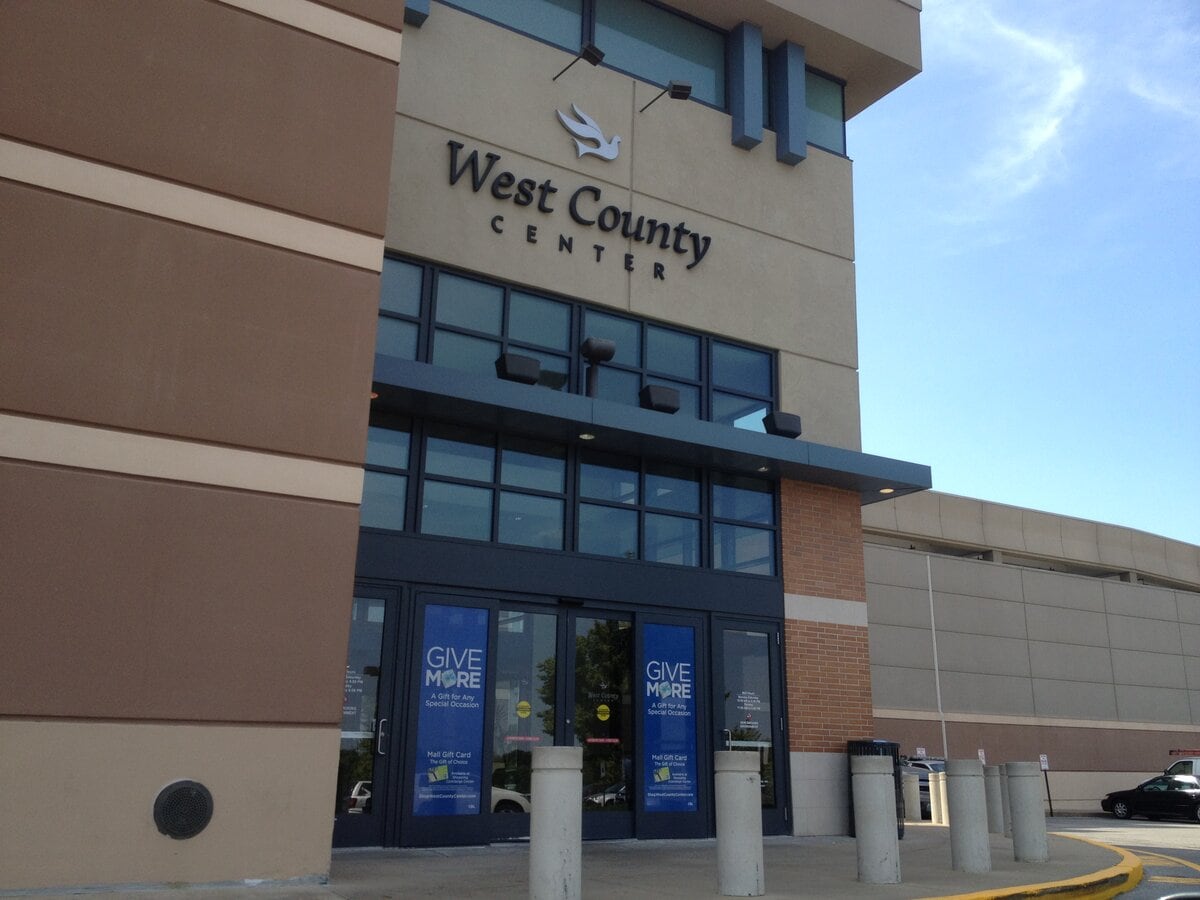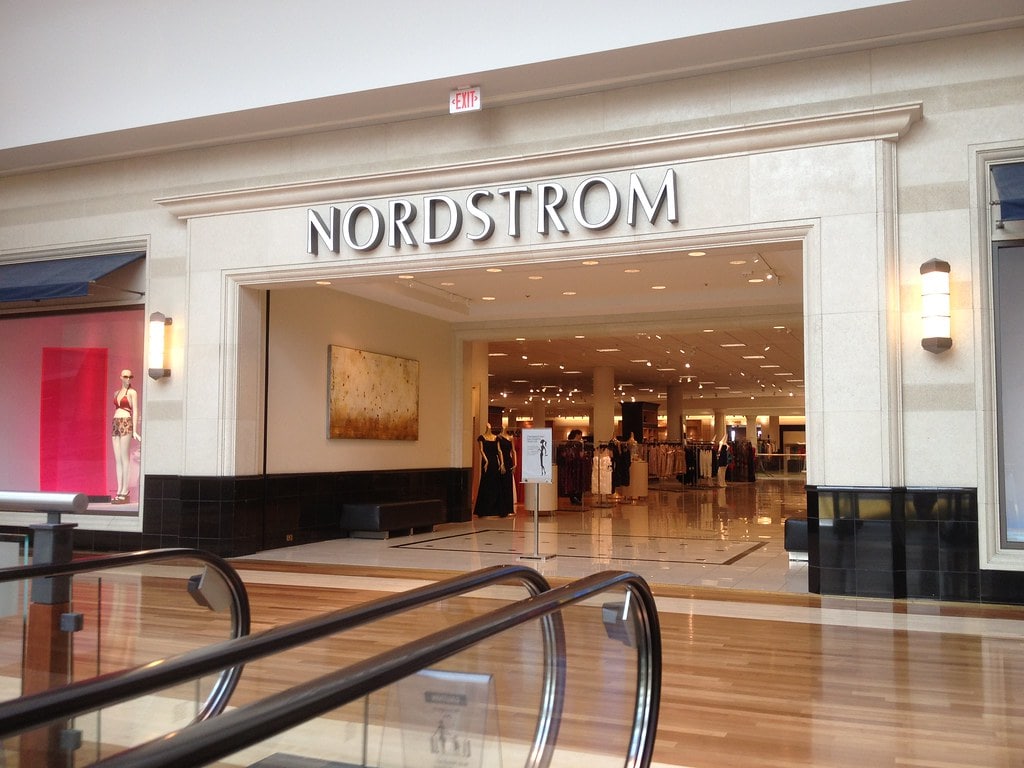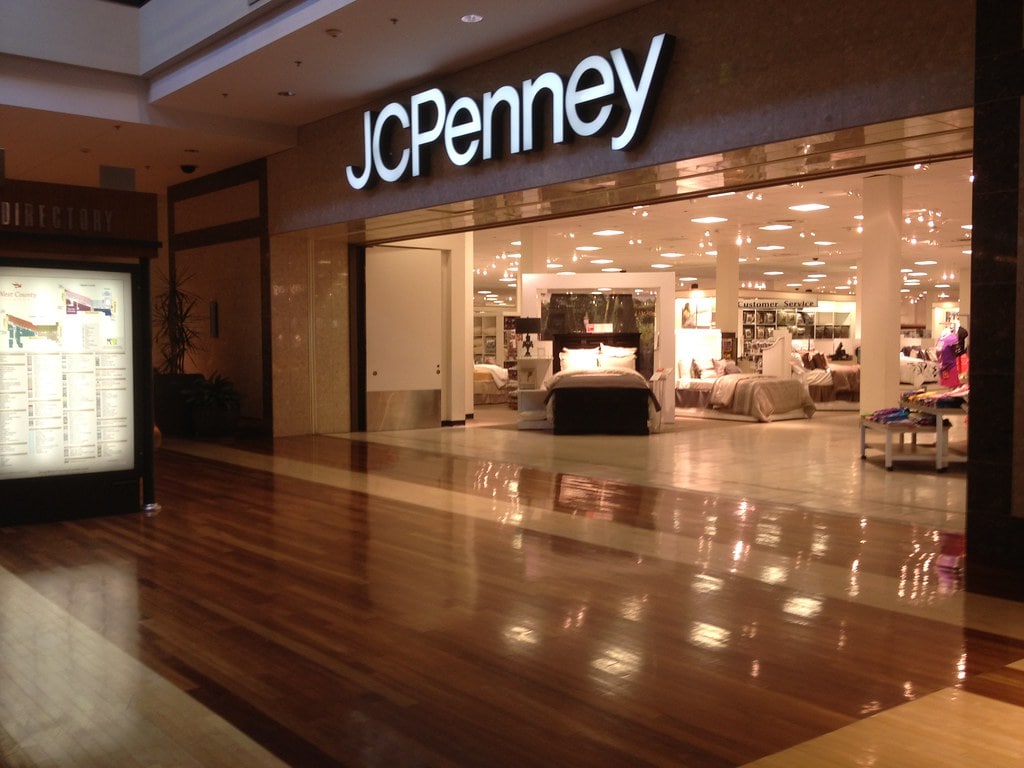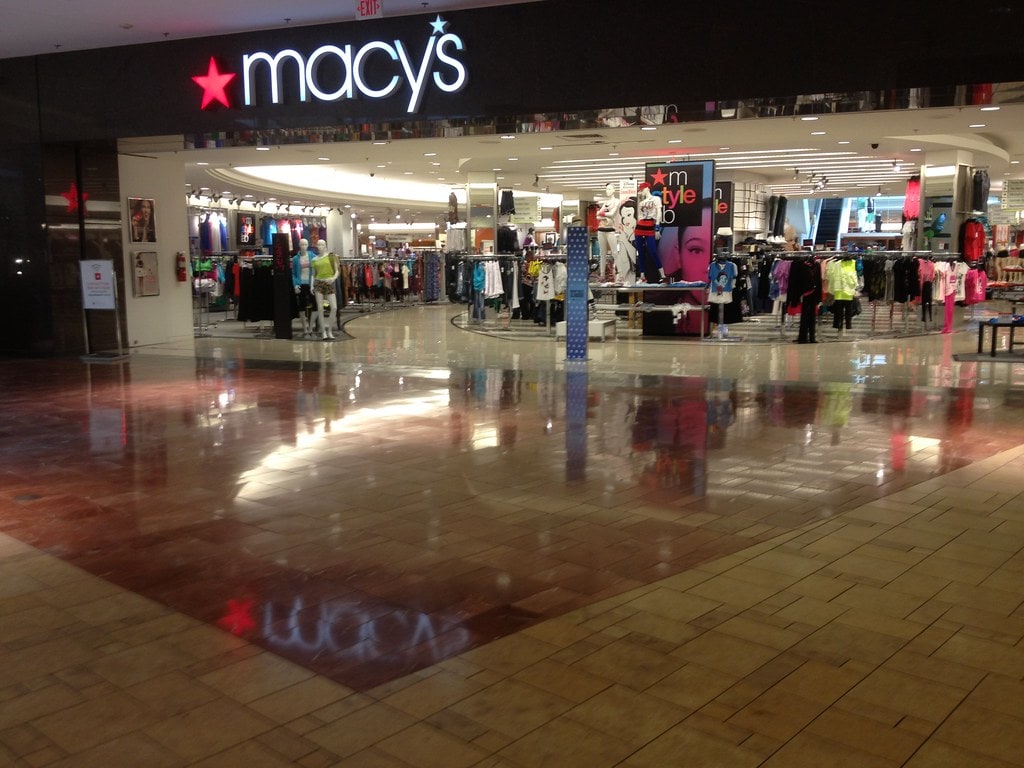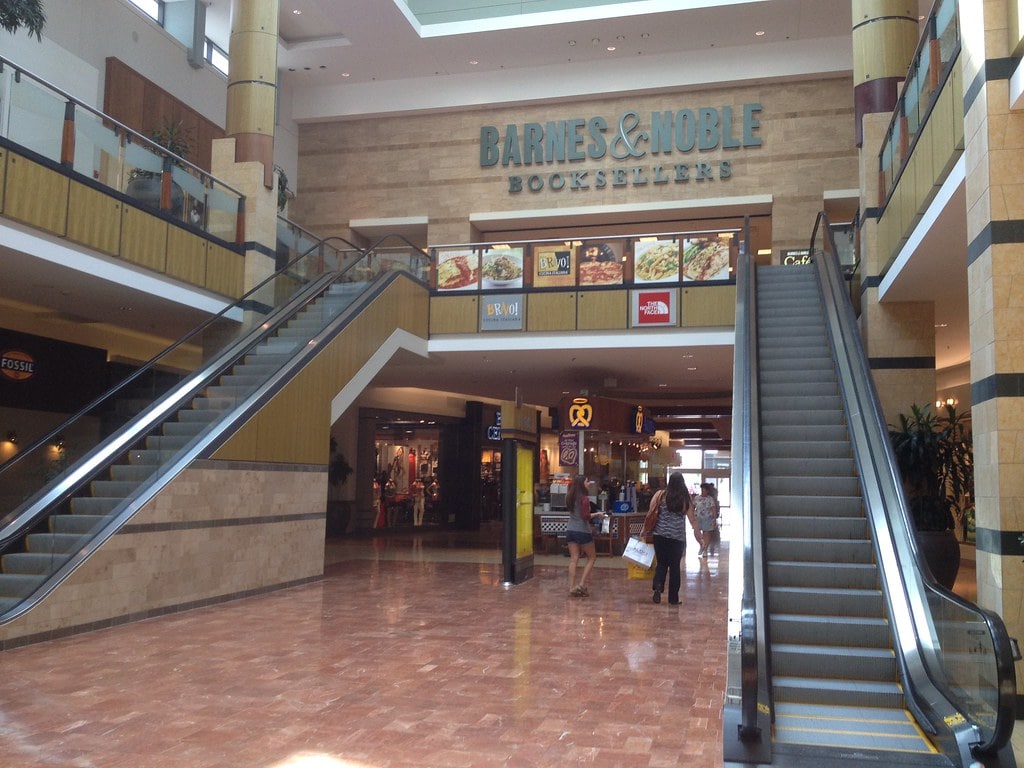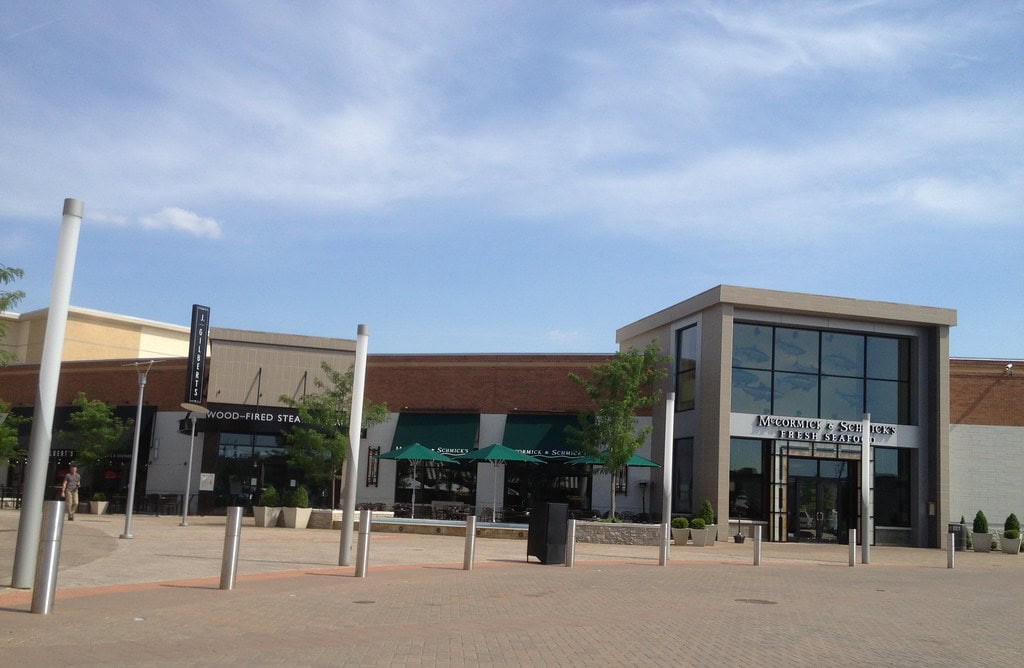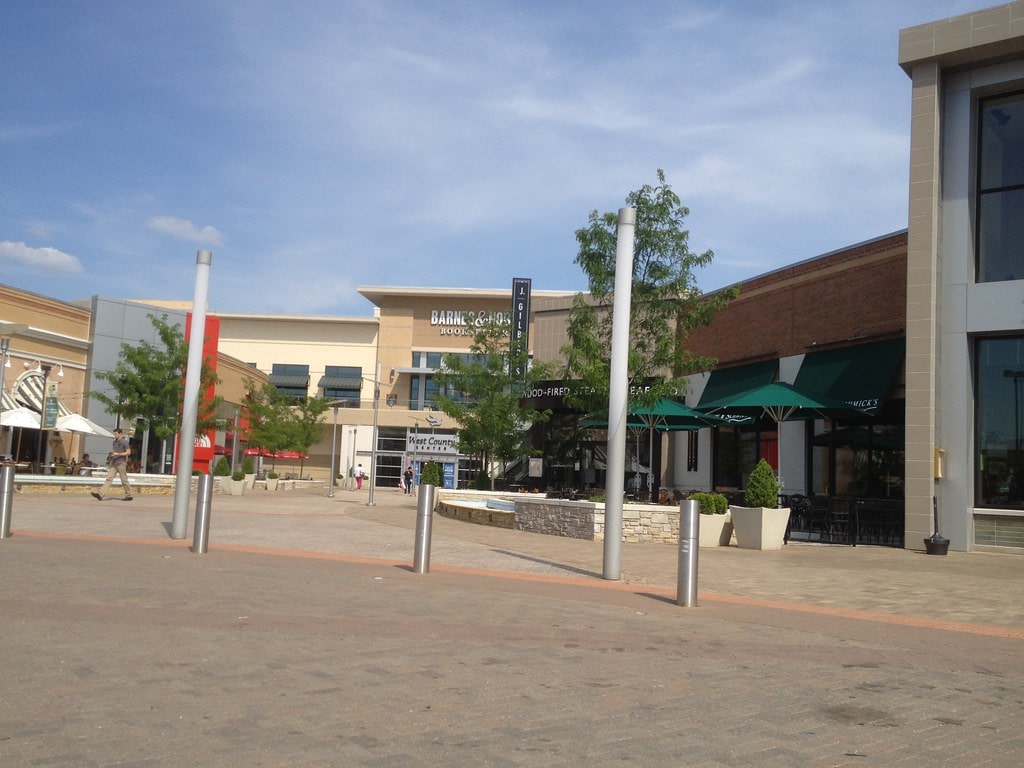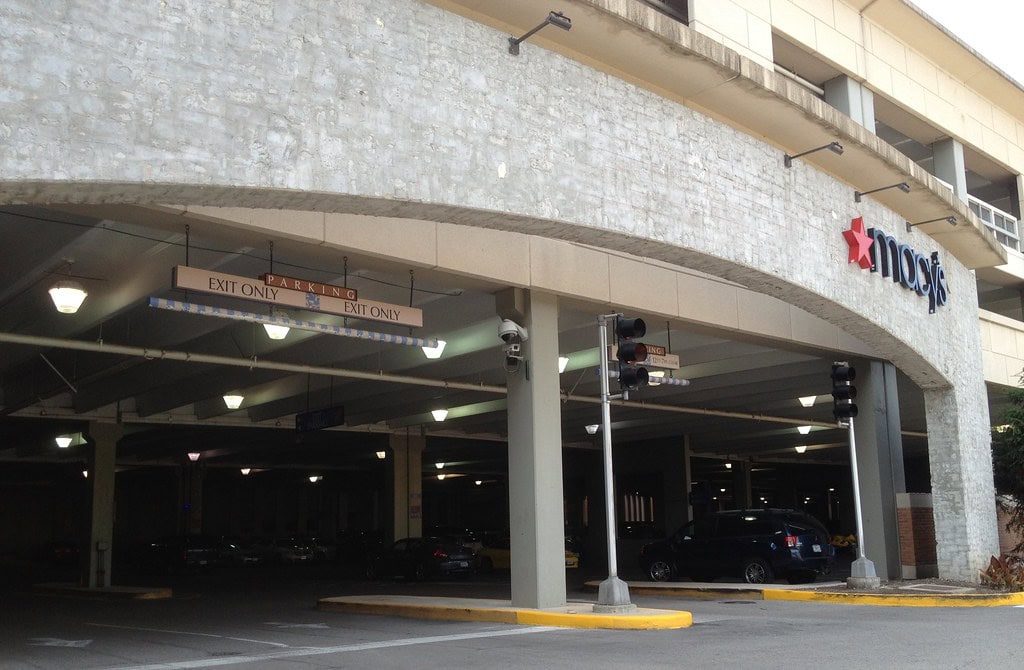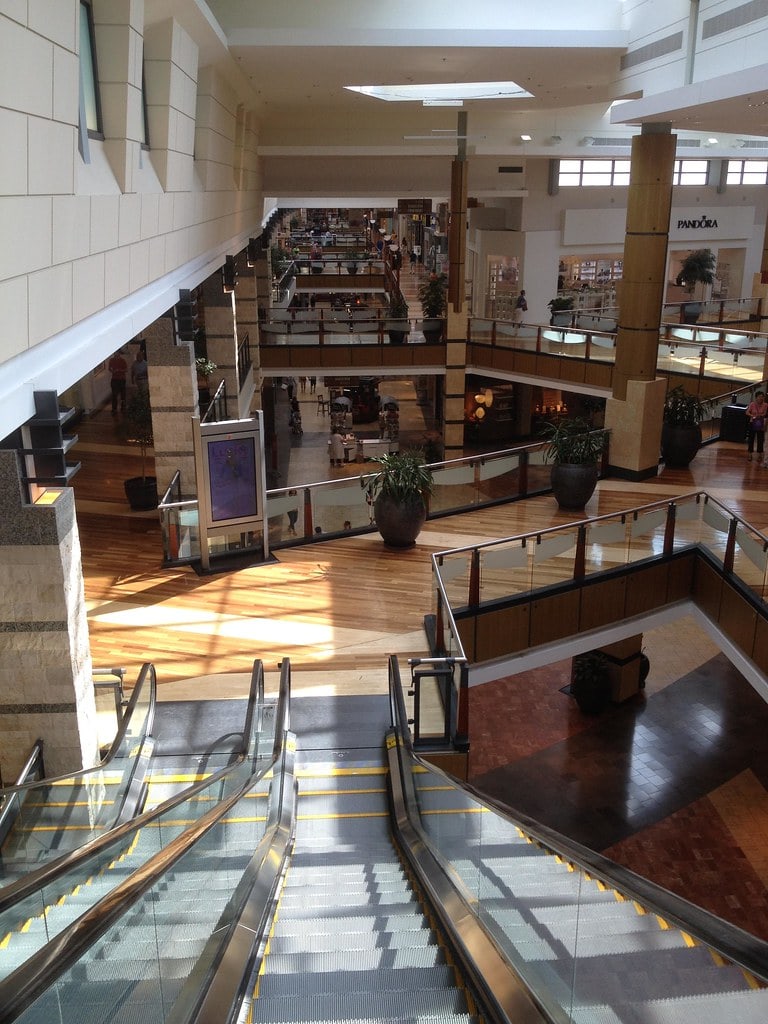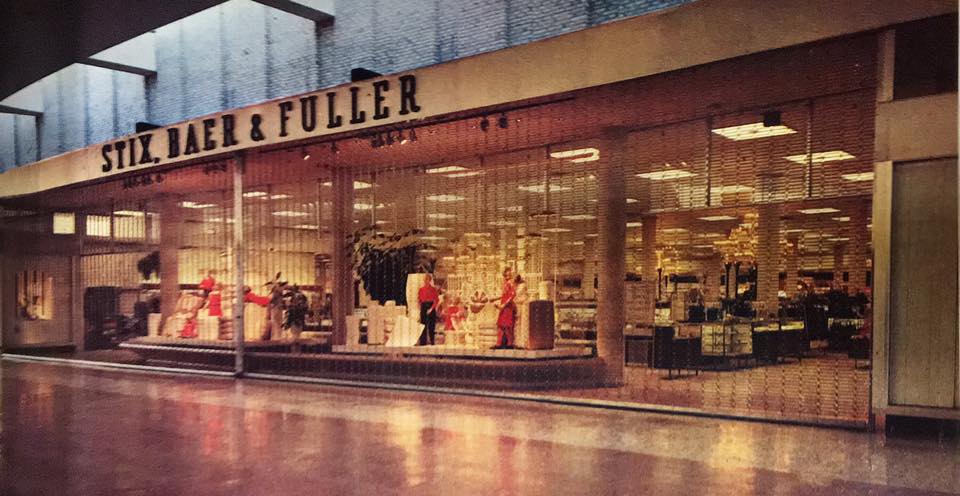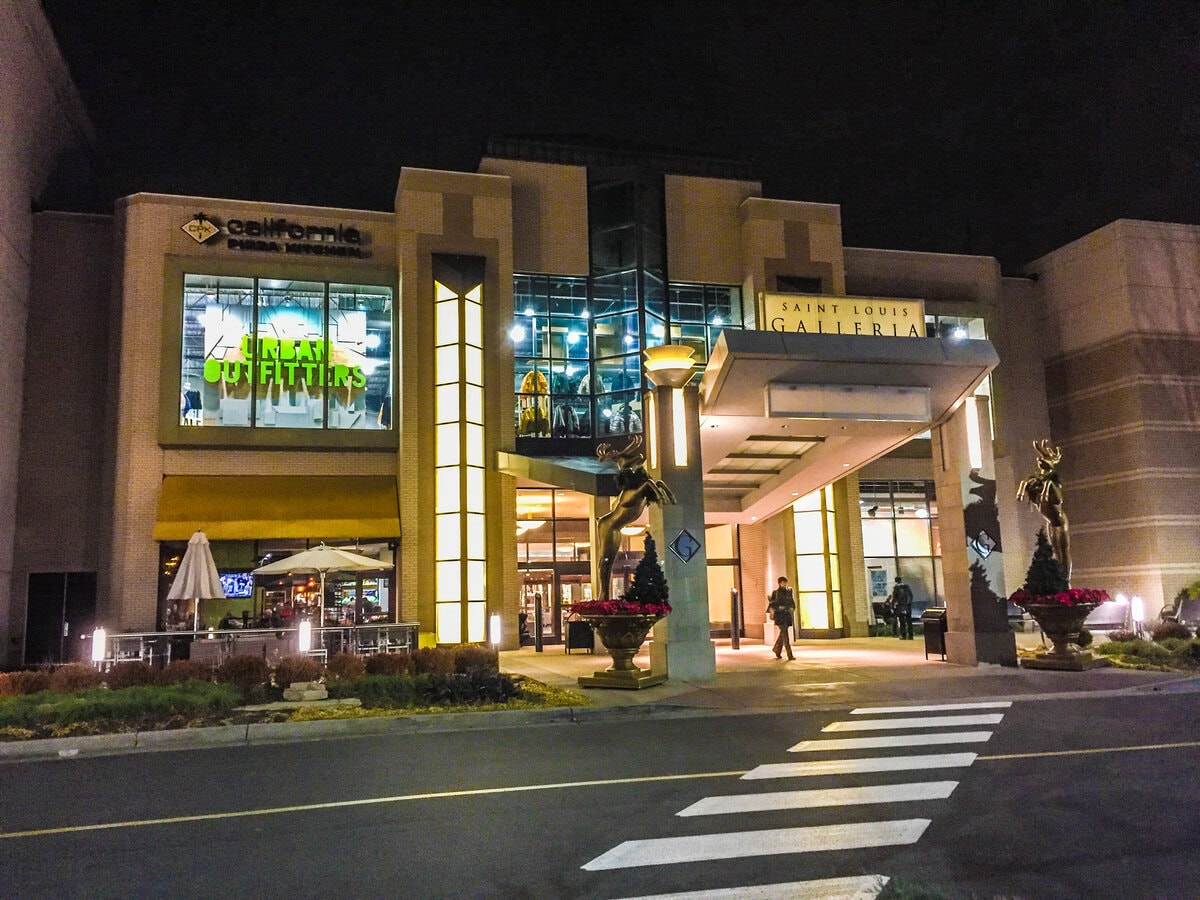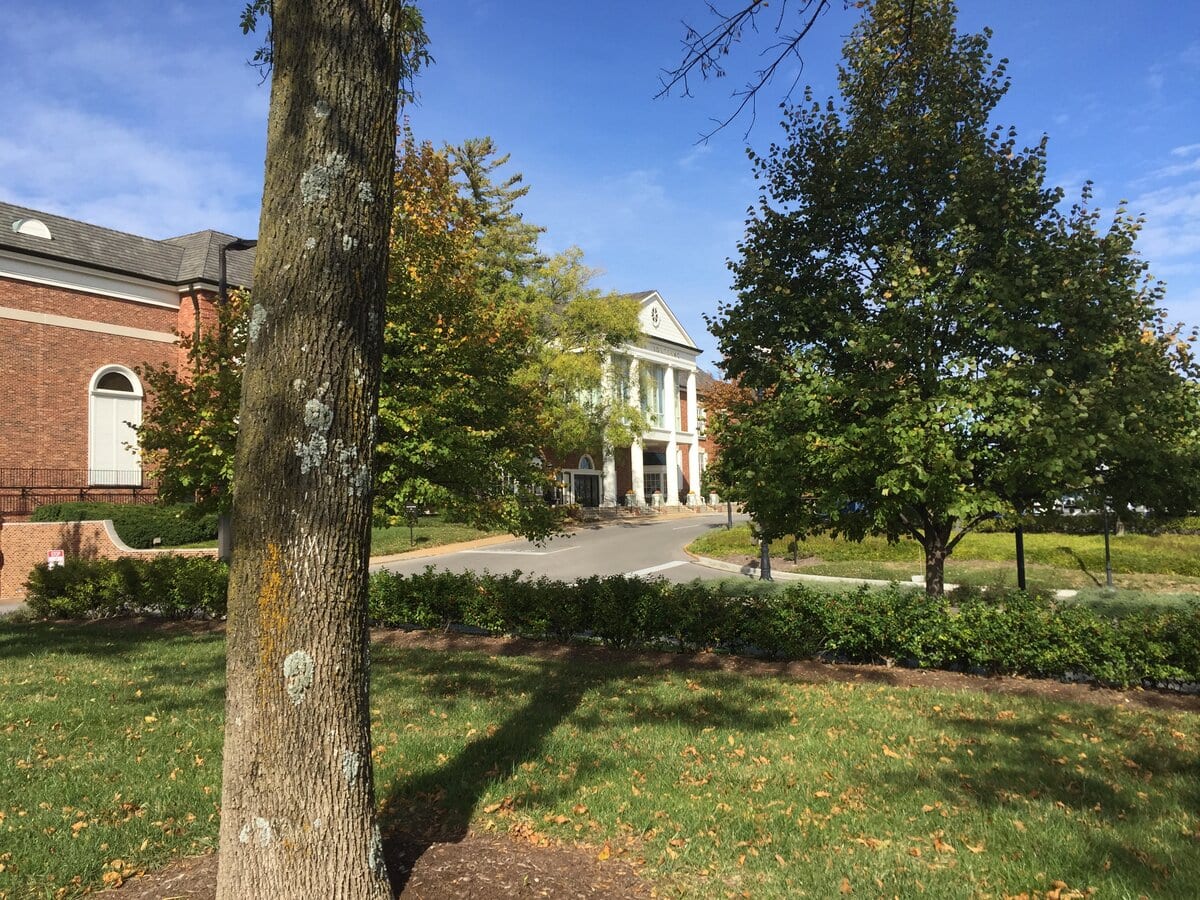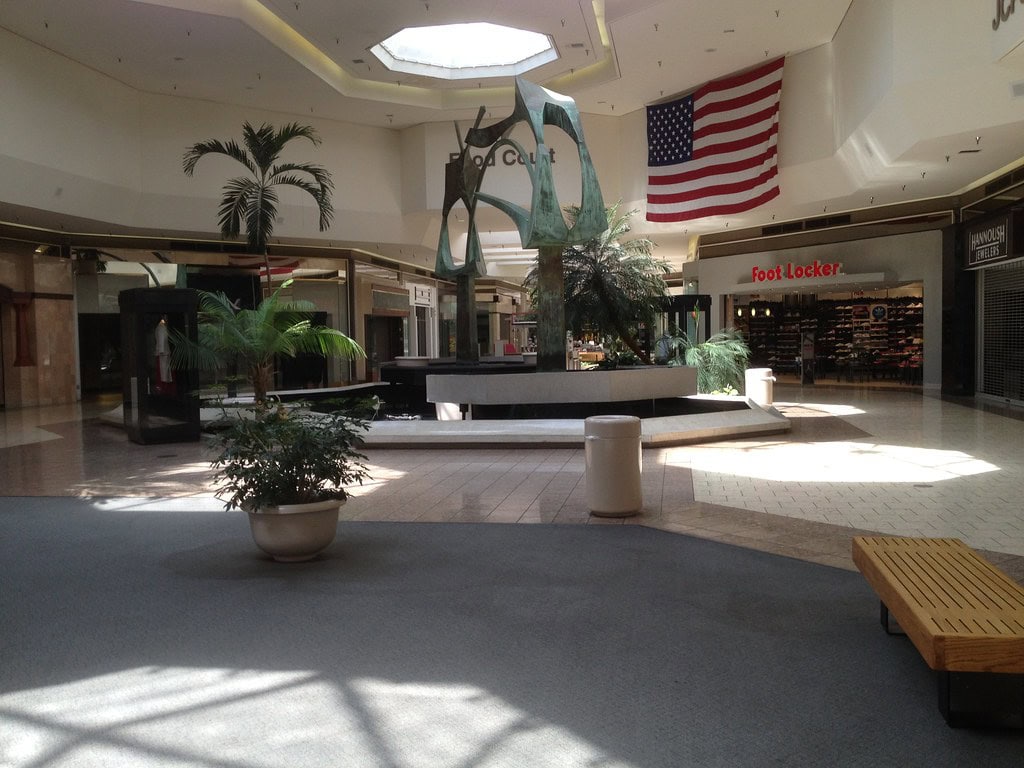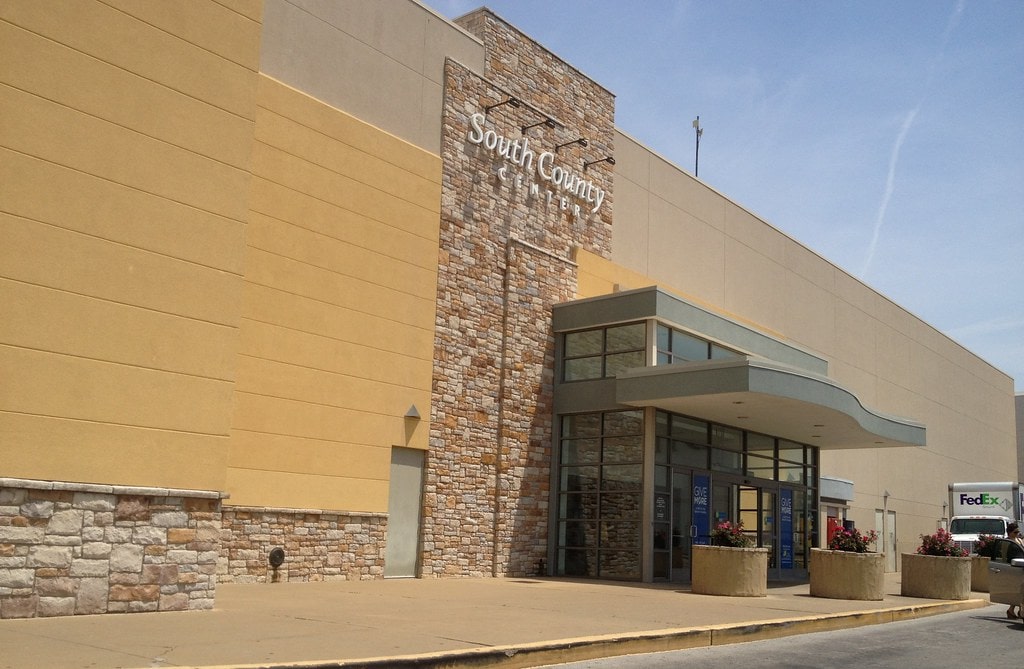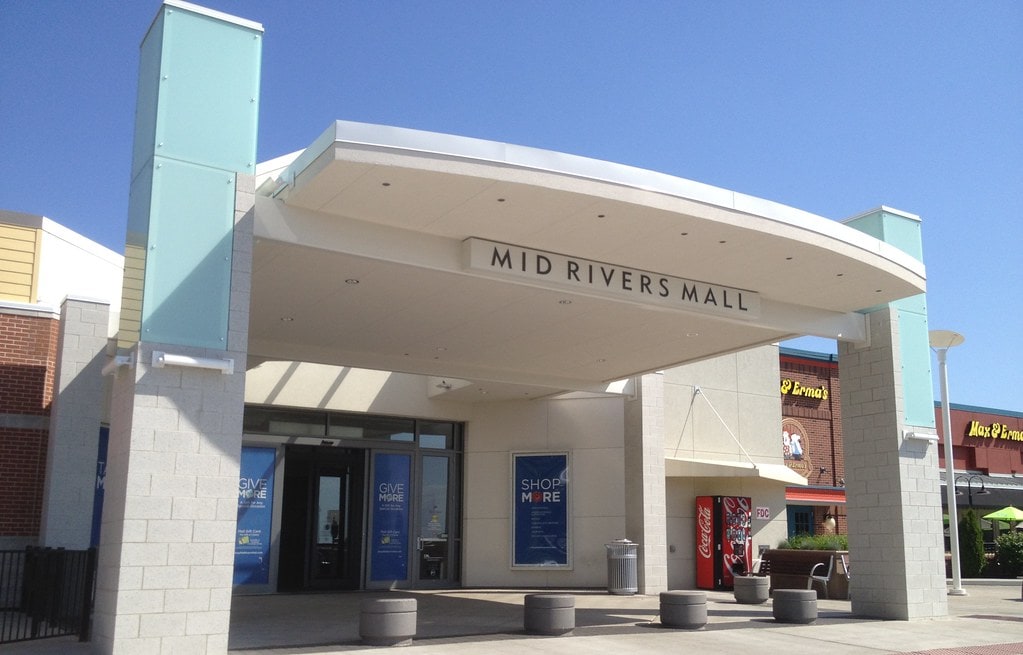Origins of West County Center
On February 20, 1969, the West County Center opened in Des Peres, Missouri, developed by May Co.'s CenterMark Properties, featuring 563,600 square feet of enclosed retail space.
The site had been home to the Manchester Drive-In, remembered for its Easter sunrise services, until Famous-Barr and JCPenney took over as the mall's anchors.
With Interstate 270 freshly built in the 1960s, the new center tied into the region's shift toward highway-driven shopping, drawing suburban families into its halls.
Famous-Barr brought its established St. Louis reputation into the new space, offering apparel, housewares, and furniture. JCPenney achieved this balance with a broad national reach.
Smaller tenants clustered between the anchors. Jewelry counters, shoe stores, and clothing shops generated steady foot traffic as the retail core began to take shape.
The building's design was practical: wide corridors, climate control, and convenient entrances that set a new standard for year-round suburban shopping.
CenterMark Properties marketed the mall as modern and accessible, using the highway connection to position it as more than a local plaza.
The site's rapid adoption demonstrated how quickly consumer habits were changing, with families opting for malls as a one-stop destination for a variety of purchases.
By the early 1970s, the center was a familiar stop for weekly errands, shaping routines and embedding itself into the rhythm of daily life in Des Peres.
Transition Years Under Westfield
In 1994, the mall changed hands when the Australian-based Westfield Group purchased the property and renamed it Westfield Shoppingtown West County.
The acquisition came as enclosed malls across the country faced growing competition, and Westfield's strategy leaned on rebranding and new development.
Three years later, in 1997, Nordstrom announced plans to join the project, setting the stage for a major reconstruction that would reshape the center.
The old structure no longer fits Westfield's long-term plans. On January 27, 2001, the mall closed its doors, marking the end of more than three decades of trade.
Most of the site was demolished in preparation for a larger complex, though JCPenney's anchor building remained and was remodeled rather than torn down.
The closure marked the end of the first phase of the West County Center and cleared the way for one of the largest commercial redevelopment projects in the region.
Shoppers who remembered the early days saw a familiar landmark disappear, while developers worked to replace it with a new retail format.
Westfield invested in marketing during this period, presenting the plan as both a commercial expansion and a chance to attract luxury tenants.
The transition years were marked by anticipation, as demolition crews prepared the land for the $230 million project that would follow in the next chapter.
Rebuilding Into a Regional Power
On September 20, 2002, the new West County Center opened, a $230 million redevelopment project with 1,138,800 square feet of retail space.
The rebuild added a two-story Nordstrom, a Lord & Taylor, a food court, three parking garages, and a two-story Galyan's Trading Company above the café court.
JCPenney returned as an anchor, alongside Famous-Barr, maintaining continuity even as the new structure expanded to dwarf the original mall's footprint.
Galyan's drew outdoor and sporting customers until 2004, when Dick's Sporting Goods acquired the chain and rebranded the store under its own name.
The addition of Nordstrom marked the company's deeper entry into the St. Louis market, pulling in shoppers who sought department store luxury.
Lord & Taylor filled another anchor space, although its tenure was short-lived, as the brand exited many midwestern locations by 2007.
In October 2007, CBL & Associates Properties acquired the mall along with four other St. Louis centers from Westfield, reshaping ownership once again.
The acquisition shifted management strategy, focusing on stabilizing occupancy and preparing for the next round of tenant changes in the late 2000s.
The redevelopment had doubled the size of the original mall, confirming West County Center's place as one of the largest enclosed retail complexes in Missouri.
New Wings and Retail Shifts
By 2009, the Lord & Taylor building had been demolished. The empty anchor had been torn out to make way for a new wing, with Barnes & Noble moving in from a freestanding site down the road.
Around it came a run of specialty stores—mid-sized tenants that filled the gap left by the failed department store.
This wasn't the first reshuffle. Just three years earlier, Famous-Barr had been converted into Macy's, part of the wider shift as local names gave way to national chains.
The Barnes & Noble didn't function only as a bookstore. It became a steady draw, hosting readings, events, and serving as a meeting place inside the redeveloped wing.
Around the same time, Apple opened one of only two locations in St. Louis, and the region's first Lego Store set up shop.
Together, they attracted families and younger shoppers, a different audience from the traditional apparel base.
In September 2012, the mall's ownership changed again. CBL & Associates sold half its stake to TIAA-CREF, part of a move to reduce corporate debt across several properties.
The Dove Sign and Its Return
The Dove sign went up with the mall's opening in 1969, facing Interstate 270. For decades, it worked as more than decoration—people used it as a landmark, a spot to tell friends where to meet.
Designed by Tony Amato, it became one of the few features of the center that locals recognized instantly.
When demolition started in 2001, the dove came down. Its removal drew complaints from nearby churches and longtime shoppers who had linked the symbol to the community. The developers promised it would return after the construction was complete.
By mid-2002, during the unveiling of the rebuilt mall, the dove reappeared outside the Nordstrom entrance.
The new placement wasn't quite the same, but its presence was enough to restore a familiar marker that had been missing through the year of upheaval.
Large, white, and visible from the interstate, the sign once again told drivers and visitors they had reached West County Center.
It has remained in place ever since, surviving multiple changes in anchors and tenants. For many locals, it remains the most recognizable piece of the property's original identity.
Anchors and Tenant Changes
By the mid-2010s, the anchors at West County Center had settled into four names: Macy's, JCPenney, Nordstrom, and Dick's Sporting Goods. Each carried its floor space and kept traffic steady.
Barnes & Noble opened in 2009 in the redeveloped wing, replacing Lord & Taylor. Meanwhile, H&M moved into the old Houlihan's site in 2018, adding a fast-fashion presence.
Other changes followed. The North Face closed in 2022, and Fan Cave took over its space, a smaller store that reflected growing interest in team apparel.
Apple's location inside the mall remained one of only two in St. Louis. The Lego Store, the only one of its kind in Missouri, added another unique draw to the center.
Restaurants and smaller chains filled gaps between anchors, creating balance and broadening the retail mix with food, services, and specialty sales.
This focus helped maintain occupancy through years when many malls struggled. The West County Center adapted without losing its market position in St. Louis.
In June 2025, Nordstrom confirmed it would close its Saint Louis Galleria store on August 24, leaving West County Center as its only St. Louis location.
The change removed a competing site within the metro area, giving Des Peres the region's lone full-line Nordstrom.

